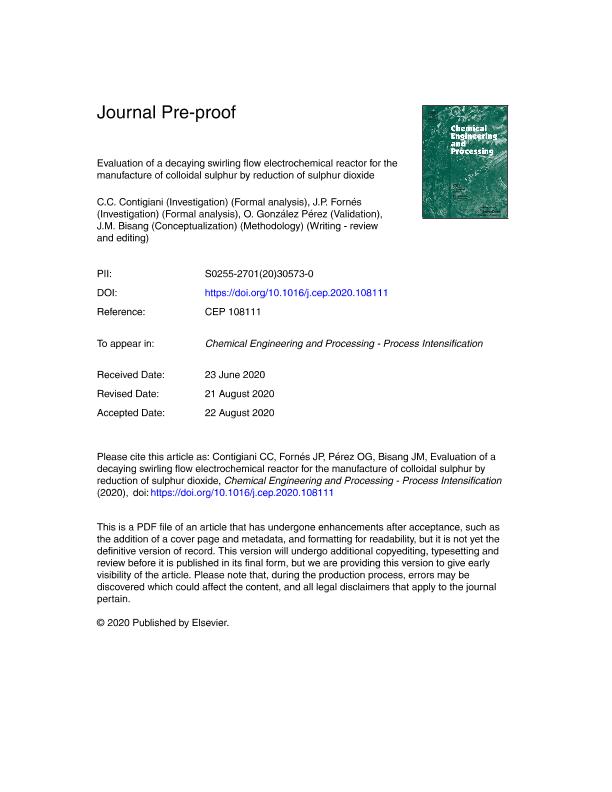Artículo
Evaluation of a decaying swirling flow electrochemical reactor for the manufacture of colloidal sulphur by reduction of sulphur dioxide
Fecha de publicación:
11/2020
Editorial:
Elsevier Science SA
Revista:
Chemical Engineering and Processing
ISSN:
0255-2701
Idioma:
Inglés
Tipo de recurso:
Artículo publicado
Clasificación temática:
Resumen
The behaviour of an electrochemical reactor with decaying swirling flow is analysed for the production of colloidal sulphur using sulphur dioxide from synthetic effluents as raw material. The experiments were done under potentiostatic control with single- and two-phase flow. The best results were obtained at a cathodic potential of −0.7 V, against a saturated calomel electrode. Thus, in a single-phase experiment at a volumetric flow rate of 8 dm3 min−1 and 1 g dm−3 SO2 in 0.5 mol dm−3 H2SO4 as a supporting electrolyte, the current efficiency was 64% with a specific energy consumption of 22.7 kW h kg−1 and a space time yield of 5.6 kg m−3 h−1, achieving a total removal of sulphur dioxide after 15 min of operation. For sulphur dioxide concentrations lower than 2.5 g dm−3 the cathode surface remained free of a sulphur layer due to the impingement action of the swirling flow. Similar results were obtained under a two-phase flow of 5% SO2 in nitrogen. In this case, the sulphur particles presented mainly spheroidal shape with an average size of 2.8 μm being of high purity. The comparison with other types of electrochemical reactors concludes that the equipment with swirling flow represents the best option.
Palabras clave:
COLLOIDAL SULPHUR
,
ELECTROCHEMICAL REACTOR
,
SULPHUR DIOXIDE
,
SWIRLING FLOW
Archivos asociados
Licencia
Identificadores
Colecciones
Articulos(CCT - SANTA FE)
Articulos de CTRO.CIENTIFICO TECNOL.CONICET - SANTA FE
Articulos de CTRO.CIENTIFICO TECNOL.CONICET - SANTA FE
Citación
Contigiani, Camila Cecilia; Fornés, J. P.; González Pérez, Omar; Bisang, Jose Maria; Evaluation of a decaying swirling flow electrochemical reactor for the manufacture of colloidal sulphur by reduction of sulphur dioxide; Elsevier Science SA; Chemical Engineering and Processing; 157; 11-2020; 108111-108118
Compartir
Altmétricas




